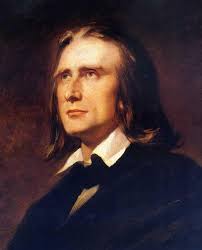Franz Liszt, the legendary 19th-century composer, and virtuoso pianist, revolutionized piano music with his technical brilliance and innovative compositions. His works span a wide range of styles and forms, showcasing his extraordinary creativity and profound musical insight. Here are ten of his most celebrated compositions:
1. Hungarian Rhapsody No. 2 in C-sharp minor
One of Liszt’s most famous works, the “Hungarian Rhapsody No. 2” is a dazzling display of virtuosic piano technique and expressive depth. Inspired by Hungarian folk music, this piece captivates audiences with its dramatic contrasts, from the fiery opening to the lyrical middle section and the exhilarating finale.
2. Liebestraum No. 3 in A-flat major
“Liebestraum” translates to “Dream of Love,” and this piece is one of Liszt’s most beloved piano works. The third of three nocturnes, “Liebestraum No. 3” is renowned for its romantic, flowing melodies and expressive richness, evoking a sense of dreamy passion and tender emotion.
3. Piano Sonata in B minor
A pinnacle of Liszt’s compositional achievement, the “Piano Sonata in B minor” is a monumental work that defies traditional sonata form. This single-movement masterpiece unfolds in a continuous, seamless narrative, exploring a vast range of emotions and technical challenges, from lyrical passages to thunderous climaxes.
4. Totentanz (Dance of Death)
Inspired by the medieval “Dies Irae” chant, “Totentanz” is a fearsome and thrilling set of variations for piano and orchestra. This piece showcases Liszt’s virtuosic prowess and innovative use of the piano, creating a haunting, almost apocalyptic atmosphere that leaves a lasting impression.
5. Years of Pilgrimage (Années de pèlerinage)
This collection of piano pieces reflects Liszt’s travels and experiences across Europe. Divided into three volumes, “Years of Pilgrimage” captures the beauty, culture, and spirit of places like Switzerland and Italy. Highlights include “Vallée d’Obermann,” “Les cloches de Genève,” and “Sposalizio.”
6. Mephisto Waltz No. 1
The “Mephisto Waltz No. 1” is a vivid and dramatic depiction of a scene from Nikolaus Lenau’s Faust. This piece is characterized by its diabolical energy, rapid tempo, and virtuosic demands, painting a musical picture of Faust’s wild dance with Mephistopheles.
7. Transcendental Études
A set of twelve études, the “Transcendental Études” push the boundaries of piano technique and expressiveness. Each étude presents unique technical challenges and musical character, from the tempestuous “Mazeppa” to the delicate and lyrical “Ricordanza.”
8. Les Préludes
As one of Liszt’s symphonic poems, “Les Préludes” is a groundbreaking work that illustrates the composer’s innovative approach to orchestral writing. Inspired by a poem by Alphonse de Lamartine, this piece explores themes of love, war, and fate, culminating in a powerful and triumphant finale.
9. Faust Symphony
Liszt’s “Faust Symphony” is a programmatic work inspired by Goethe’s epic poem “Faust.” This three-movement symphony portrays the characters of Faust, Gretchen, and Mephistopheles through rich orchestration and thematic development, creating a deeply expressive and dramatic musical narrative.
10. Consolations
The “Consolations” are a set of six short piano pieces that embody Liszt’s lyrical and introspective side. These pieces are characterized by their serene, meditative quality and simple, yet profound beauty, providing a contrast to Liszt’s more virtuosic works.
Conclusion
Franz Liszt’s compositions remain a cornerstone of the piano repertoire, celebrated for their technical brilliance, emotional depth, and innovative spirit. Whether through the dazzling virtuosity of the “Hungarian Rhapsodies” or the profound introspection of the “Piano Sonata in B minor,” Liszt’s music continues to captivate and inspire musicians and audiences alike.


Comments are closed